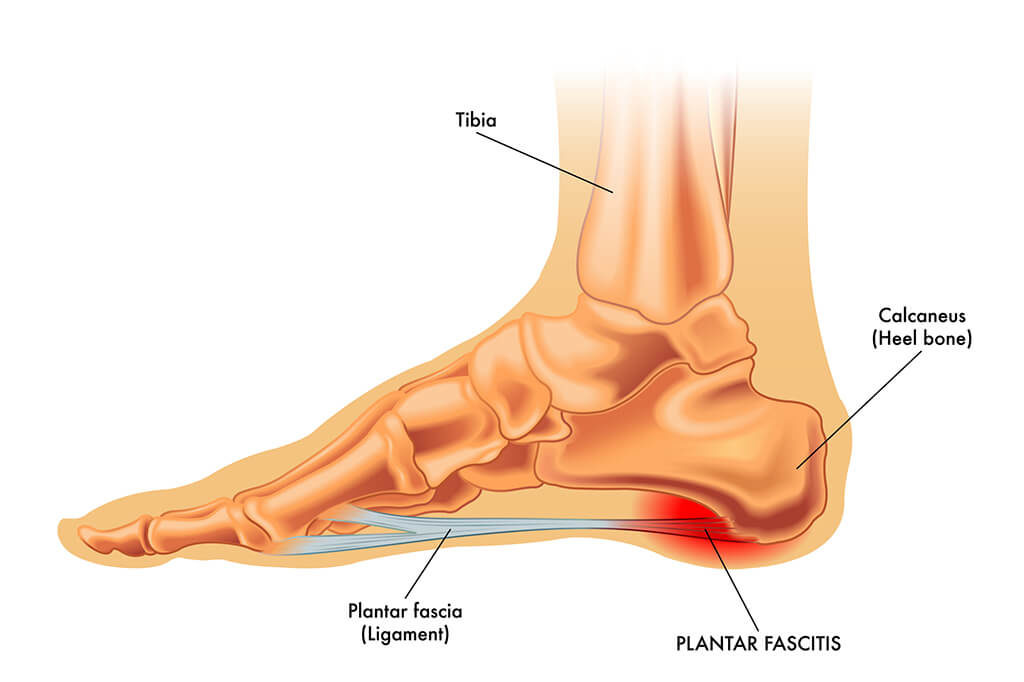PLANTAR FASCIITIS TREATMENT
Plantar Fasciitis Treatment In Hyderabad

An inflamed plantar fascia — the rubber band-like ligament that stretches from your heel to your toes — is very painful. Imagine walking around with a strong ache in your heel, a tender bruise on the bottom of your foot, or a stabbing pain that hits you the moment your feet hit the ground in the morning. Now, if you already have it, imagine your pain beginning to go away or disappearing altogether — this too can happen.
The normal foot has 28 bones, 33 joints and more than 100 muscles, tendons and ligaments. It does so much! The plantar fascia itself supports the arch of your foot. It absorbs pressure — think of the shock absorbers of your car. It bears your weight. Pain is inevitable when the tissues are inflamed, or partially or completely torn.
The word “fasciitis” means “inflammation of the fascia of a muscle or organ” while “plantar” relates to the sole of the foot. Two million patients get treatment for plantar fasciitis, annually. That makes it the most common cause of heel pain. It’s common especially for athletes — specifically, runners. The repetitive motion of pushing off with your feet can injure the tissues.
Causes :
Too much pressure and stretching damages, inflames or tears your plantar fascia.
Unfortunately, there’s no discernable cause for some cases. However, you’re more likely to get plantar fasciitis if:
► You have high-arched feet or flat feet.
► You wear shoes that don’t support your feet (especially for a long time on a hard surface).
► You’re obese. (70% of patients with plantar fasciitis are also obese.)
► You’re an athlete.
► You’re a runner or jumper.
► You work or exercise on a hard surface.
► You stand for prolonged periods of time.
► You exercise without stretching your calves.
Symptoms :
Both a dull pain and a stabbing pain have been reported by patients with plantar fasciitis. The symptoms of plantar fasciitis include:
► Pain on the bottom of the heel, or nearby.
► Increased pain after exercise (not during).
► Pain in the arch of the foot.
► Pain that is worse in the morning or when you stand after sitting for a long time.
► A swollen heel.
► Pain that continues for months.
► A tight Achilles tendon. (80% of people report this symptom.) Your Achilles tendon connects your calf muscles to your heel.
Treatment of Plantar Fasciitis :
Over 90% of those who have plantar fasciitis will improve within 10 months with the following. They include:
► Stretching your calf muscles.
► Wearing supportive, sturdy, well-cushioned shoes. Don’t wear sandals or flip flops that do not have a built in arch support. Don’t walk with bare feet.
► Using appropriate shoe inserts, arch supports or custom-made foot orthotics.
► Using a night splint to reduce tightness in the calf muscle.
► Massaging the area.
► Putting ice on the area three to four times per day for 10 to 15 minutes.
► Limiting physical activity including prolonged standing.
► Taking over-the-counter nonsteroidal anti-inflammatory drugs (NSAIDs) like ibuprofen (Advil®, Motrin®) or naproxen (Aleve®).
► Losing weight.
► Using crutches.
Outpatient treatments include:
► Cortisone (steroid) injections.
► Physical therapy for stretching and exercises.
► Extracorporeal shockwave therapy (ESWT). Shockwaves stimulate the healing process. This procedure is not commonly used.
► Seeing a podiatrist (foot specialist) for recommendations regarding insoles and shoes.
